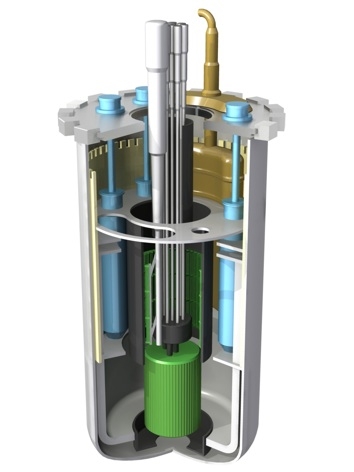Stuart Nathan
Features Editor
The UK must make greater efforts in developing the next generation of nuclear reactors if it is to succeed in a market which is to become increasingly competitive
Earlier this week, I attended a conference on small modular nuclear reactor technology as research for a feature I am writing for our upcoming issue. Small modular reactors (SMRs) are one of the hot topics in the nuclear sector at the moment, and the UK is active in developing several of them; readers will be able to learn more in the upcoming feature.

It is well-known that the UK lacks the supply chain and the intellectual property to build entire nuclear power stations; the IP issue dates back to the 1970s, with the government's decision to abandon advanced gas-cooled reactors and instead opt for the pressurised water reactors (PWRs) that were then newly developed and now dominate the sector. The supply chain problem is in fact worldwide: there are very few facilities capable of making the enormous forgings needed for a gigawatt scale PWR, and every country that wants to build one has to wait in line for their forgings. This is one factor in what appears to be a growing belief – that the gigawatt PWR has had its day. There are many reasons that nuclear reactors have become so large and so complex over the years, ranging from economies of scale to reactions to nuclear accidents and natural disasters, but the upshot of these changes is that large reactors have now become so expensive, so complex and take so long to build that not even the biggest economies with the largest-available workforces now see them as a practical option. It is possible that Hinkley Point C may be one of the last of its generation.
But as a concept, nuclear is still attractive. It offers low-carbon electricity with relatively low running costs, and if the enormous cost of building the reactor and associated power station can be reduced, it would be even more attractive. Hence the interest in SMR technology, with its promise of reducing cost by cutting the size of the reactor components and by bringing in the efficiencies that manufacturing in a factory offers and which have been so successful in many industries. It is also a concept that would suit UK manufacturing capacity very well; while gigawatt scale components can't be forged in the UK, smaller ones certainly could.
One important factor in developing SMRs is regaining the IP and skills lost to the sector over the years. The first generation of SMRs to be deployed are very likely to be ones which use established technology; in other words, they are scaled down PWR-type modules. A side effect of this is that the UK will never own the full IP. So in order to be sure of gaining the valuable advantage of being a prime mover in the field, we have to look to the next generation of reactors. These are known as Generation IV, and differ from PWRs in many important respects.
Most Generation IV technologies operate at high temperatures, using different construction materials and coolants from the current generation of reactors. The UK has experience in developing high-temperature reactors, and although this development did take place some decades ago, with those involved now around retirement age, that experience is still valuable and viable. There are several projects looking at developing this type of reactor in academia and industry in Britain. However, it is not alone in this, and research is also underway in the US, Canada, Russia, and China, among others. And they are all equally determined to access the potential benefits of these technologies
A recent report from the UK Nuclear Innovation and Research Advisory Board (NIRAB) identified Generation IV reactors is an important area for research, but there is a danger that because they are unlikely to be the first commercial SMRs they will be neglected in favour of those designs that can be sold and start recouping their development costs more quickly. This would be a mistake. One way to avoid it, and this is also a NIRAB recommendation, would be for the UK to become an active member of the Generation IV Foundation (GIF), a transnational body that supports collaboration in developing these reactors.
The UK was in fact a founder member of the GIF, but withdrew as an active member in 2005. Nuclear engineers have been telling The Engineer for more than a decade that this was a mistake, a science Minister of the coalition government told us that it was likely the UK would rejoin. We know the government is slow, and that the agenda has been comprehensively derailed by the upcoming Brexit negotiations and, in the nuclear field, by the accompanying withdrawal from Euratom. However, with Science Minister Jo Johnson’s announcement last week that alternative means were being sought to continue nuclear collaboration, a signal that the GIF would also be on the agenda would be valuable to the industry as a sign that the government understands the importance of looking to the future and longer term prospects.
It will not be easy for the UK to maximise the potential of SMRs, for many reasons related to geopolitics, macro economics, and the relationship between industrial capability and capacity. But developing technology and securing the IP would help the country reap some of the rewards independent of these factors. Rejoining GIF, as a signal that we are still willing to cooperate with other countries and access expertise across national boundaries, would be a valuable step.




Report highlights significant impact of manufacturing on UK economy
I am not convinced that the High Value Manufacturing Centres do anything to improve the manufacturing processes - more to help produce products (using...